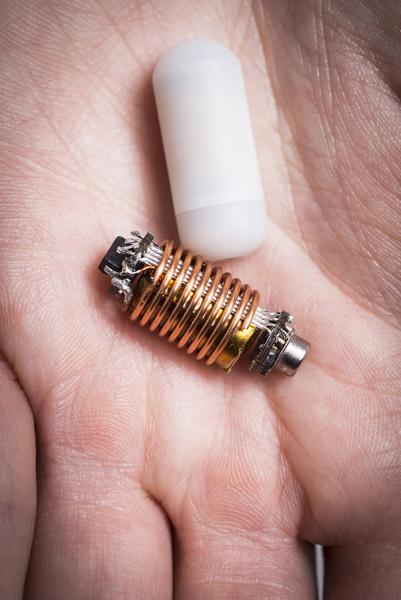
“Blow, winds, and crack your cheeks! Rage, blow!”
--Shakespeare's King Lear
In the inaugural issue of Nature Electronics, authors from Down Under report the development of a sensor that analyses the gases present, well, down under; or at least in your intestine. It is an extension of a proof of concept from animals to humans but does reveal some fascinating physiology. [1]
Oxygen levels varying with the gut, from a high of about 65% (contrasted with atmospheric levels of 21%) in the stomach to less than 1% in the large intestine. This reflects the increasing presence and activity of anaerobic bacteria that function best in environments bereft of oxygen. Hydrogen levels, on the other hand, are less 0.25% in the stomach, rising in the presence of anaerobic bacteria of the colon to 3.5% - again due to the presence of anaerobic bacteria. Hydrogen levels are a bit more complicated. Some anaerobes produce hydrogen while others, like acetogens, methanogens, and sulphate reducing bacteria reduce them, so any level reported is a rough measure of their presence.
The authors report development an ordinary size medicine capsule containing sensors that detect oxygen, hydrogen as well as carbon dioxide. The readings are transmitted to a small receiver that could fit in a pocket, like a cell phone. In their small, proof of concept study, they looked at the findings in 4 individuals fed high (50 gm) and low (15 gm) fiber diets. [2]
They found that oxygen concentration was a useful marker for location and much the same way Waze gives us traffic conditions, oxygen could accurately identify transit times. The level of fiber affected transit through the GI tract mostly in the large intestine, where transit was about 4 hours in the high fiber group and 54 hours in the low fiber group (which required higher fiber and an additional 36 hours to expel the capsule).
Fiber had a different effect on the microbiome. Despite fecal samples at the high and low fiber levels being identical, the hydrogen concentrations (remember this value is a balance between production and consumption) varied. Low fiber resulted in less anaerobic activity than high, but the gut response to a change was quick, on the order of a day or two. High levels of fiber resulted in more bloating and discomfort, not a surprise there.
The capsule has potential to help in the diagnosis of intestinal motility disorders, like constipation or irritable bowel syndrome. These conditions usually require testing that may be invasive or involve radiation. The capsule would eliminate those concerns. The findings of higher hydrogen levels despite similar fecal sampling suggests that the capsule may have a role in differentiating the types of bacteria present in the gut and the effects of medications or diet on them. Finally, carbohydrates that are slowly absorbed (low glycemic index) reduce spikes in blood glucose, a boon to patients with diabetes and perhaps all of us. Maybe the capsule can help us personalize our fiber intact to maximize transit time in the small intestine (lowering the glycemic index) while increasing transit time in the colon, reducing concerns about constipation.
Notes
[1] Once again I may well have been sleeping in medical school, but I am sure none of this was mentioned in class.
[2] Average dietary fiber intake is 15gm with the recommendation for 25-30 gms of daily.
Source: A human pilot trial of ingestible electronic capsule capable of sensing different gases in the gut Kalantar-Zadeh et. al.



